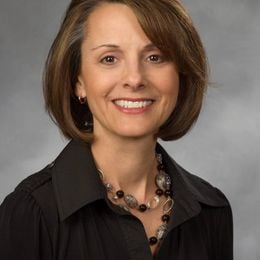Ageism in the Workplace: Can President Biden Change the Course?
Why some labor analysts say it's beyond time to take action
Editor’s note: This is the first of a two-part series on older workers and ageism.

On January 20, Joe Biden placed his left hand on a Bible, raised his right hand and was sworn in as America's 46th president. At 78, Biden also became the oldest person ever elected to our nation's highest office. The significance of an almost octogenarian president wasn't lost on Joan, a 65-year-old Chicago medical analyst (she prefers not to reveal her name) who watched the event on television.
"Trust me, Biden's age has not gone unnoticed," she says. "I'm hopeful this is a reflection of changing attitudes towards older adults."
When it comes to the workforce, maybe, but maybe not.
Ageism is a fact of life in the American workplace, says Haig Nalbantian, a workforce analyst for business consultant Mercer. Speaking with some hyperbole, Nalbantian says: "Once an employee gets beyond the median age of the employee population, everything goes negative for them."
A Year of Job Hunting
No one knows that better than Joan, who lost her hospital management job two years ago and believes age played a part. Despite an MBA and 40 years of work experience, it took her a full year and more than 100 applications to finally land another position at a much lower level and at half the pay.
"Part of me is frustrated because I'm working twice as hard" as before, she says. "It's not that I don't like it, it's that this job wouldn't have been my first choice."
"It's sort of a lax time for worker protection, so they're taking advantage of what they've always wanted to do but were too afraid to."
Nearly a quarter of the U.S. workforce is 55 and older. That cohort is expected to increase to a third of the workforce in the next decade. Yet getting jobs and keeping them has grown harder for older workers in recent years. The pandemic has made things even worse.
In recessions dating back to 1948, older workers were less likely to get axed from jobs compared to younger ones due to their seniority. But that's been changing.
Last April, when coronavirus cases spiked across the U.S., the unemployment rate for people 55 and older was 13.6% versus 12.8% for people aged 25 to 54. By the end of the year, the jobless rate had come down for both groups, but was still slightly higher for those over age 55.
Teresa Ghilarducci, a labor economist with the New School of Social Research and a Next Avenue Influencer in Aging, believes some employers are using the pandemic to shed more experienced, higher-paid older workers.
"It's sort of a lax time for worker protection, so they're taking advantage of what they've always wanted to do but were too afraid to. They're using COVID as a cover," says Ghilarducci.
During his campaign for president, Biden promised to protect older workers against discrimination by establishing workplace safeguards that make it easier for older workers to prove they were treated unfairly.
Improving the Federal Age Discrimination Law
While the president hasn't yet articulated exactly what those safeguards might be, labor and public policy experts think it could include reinterpreting the Age Discrimination in Employment Act (ADEA).
That 53-year-old law prohibits job discrimination against people 40 or older. In the last decade, however, the ADEA has lost some of its power due to a 2009 Supreme Court decision requiring plaintiffs to prove age was the only reason for employment discrimination, not one of the reasons. It's known as the "but for" clause.
Some advocates for older Americans, including AARP, are pushing the new administration and Congress to turn into law the Protecting Older Workers Against Discrimination Act (POWDA), which would reverse the "but for" clause. The measure passed in the U.S. House of Representatives last year, but died in the Senate.
But University of Chicago Law School professor Jonathan Masur says POWDA may not be necessary. He argues the Equal Employment Opportunity Commission under Labor Secretary nominee Marty Walsh, if confirmed, could simply interpret ADEA differently.
"They could say our interpretation of the statute is that you don't have to prove 'but for' causation," explains Masur. "Would the Supreme Court defer to that interpretation? That's a hard question, but I think there's a good chance the Supreme Court would change its mind."
But would a toughened ADEA wind up discouraging employers from hiring older workers if they feared it might be easier for those workers to sue for age discrimination?
"We have many examples from our work where the more older workers you have in a group, the better the group performs."
Some labor analysts, like Nalbantian, say it might. And they believe incentivizing employers to hire older workers might be a better approach.
Nalbantian says Mercer has been using a carrot and stick approach with clients for a while to convince them to recruit and retain older workers.
The Proven Value of Older Workers
"We have many examples from our work where the more older workers you have in a group, the better the group performs," says Nalbantian. "That's quite telling. That's actual business performance."
Many businesses do acknowledge the value of older workers. A 2019 survey by Boston College's Center for Retirement Research found the majority of 400 businesses polled overwhelmingly said older workers were as attractive or more attractive than younger workers, from the standpoints of productivity and cost.
But Gal Wettstein, a research economist who conducted the survey, says employers also expressed concern about the health of older workers and how long they planned to stay on the job.
"Older workers trying to get hired might want to address those concerns explicitly. How to do that depends on how the worker is applying for a job. It's not something you can write in your resumé," says Wettstein.
Including age in corporate diversity, equity and inclusion (DEI) plans could also go a long way in encouraging the recruitment and retention of older workers. But a 2019 AARP survey of nearly 6,000 global companies found only about half included age in their DEI plans.
Nalbantian says companies are currently focused on gender and racial equality, due to the Me Too and Black Lives Matter movements. But, he says, eventually employers will have to address ageism.
"We're very committed to this issue," says Nalbantian. "We're pushing hard and we think we're going to have an inflection point because the workforce is getting older. You simply can't avoid this issue."
This article was written with the support of a journalism fellowship from The Gerontological Society of America, The Journalists Network on Generations and the Silver Century Foundation.

Editor’s note:

